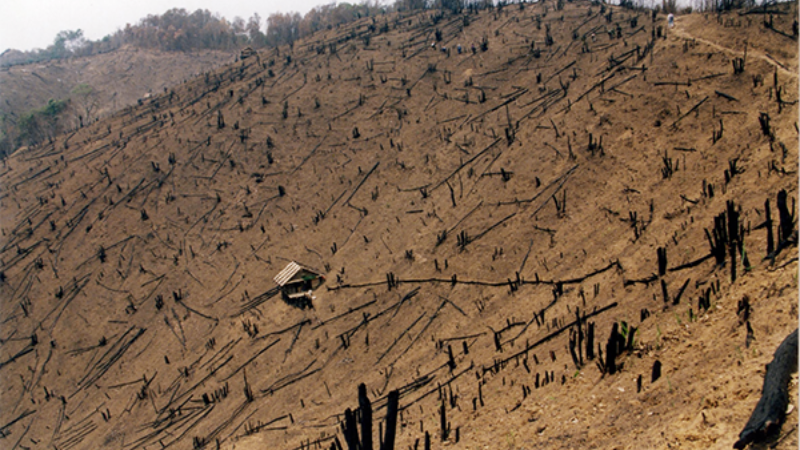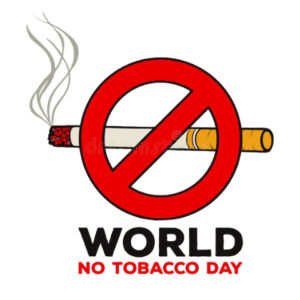Nestled in the picturesque hills of Manipur, the practice of jhum cultivation has been an integral part of the cultural and agricultural tapestry for generations. While it sustains livelihoods and preserves age-old tradition, the impact of jhum cultivation on health and the environment raises important questions about sustainability and the delicate balance between tradition and conservation. The practice of jhum cultivation, also known as shifting cultivation or slash and burn, is deeply embedded in the cultural fabric of the tribal communities in Manipur. Tribal in the North-eastern part of India and some parts of Orissa, Andhra Pradesh, Chhattisgarh, and Karnataka in India are the primary practitioners of this cultivation. One of the main livelihoods of hill people in Manipur is jhum cultivation which has been handed down through generations. Jhum cultivation follows a cyclical pattern. The shifting cultivation practice invariably involves slashing of woody vegetation, burning, and clearings including debris followed by the cultivation of crops and sowing of various crops in which upland paddy was the predominant crop. One of the strengths of practicing jhum cultivation lies in its ability to sustain a diverse range of crops. Rice, Millet, Pulses, and vegetables thrive in these fields, which contribute to the food security and livelihood of the community.
However, the earlier 15- 20 years of cycling of cultivation in one area or place is cut down to 2- 3 years now. As the initial stages of jhum cultivation involve clearing forests this leads to deforestation and habitat loss for flora and fauna in that area. The burning of vegetation exposes the soil, making it susceptible to erosion. Over time, if fallow periods are not adequately maintained, soil fertility declines posing a threat to agricultural productivity and long-term environmental health. With the changes in precipitation and increasing temperature associated with climate change, agriculture productivity is greatly affected leading to food insecurity this in turn directly affects the economy of farmers thereby negatively influencing their health of farmers. The practices of burning vegetation release particulate matter and pollutants into the air. This can compromise air quality, impacting the health of both the cultivator and nearby communities. Prolonged exposure to smoke causes chronic respiratory diseases like bronchitis and asthma which become a significant concern, highlighting the intersection between agricultural practices and public health.
The Jhum cultivation process is originally not meant to involve destroying or destruction of wild vegetation and plants if the cycle lasts for 15- 20 years. But as the ecological system changes and overpopulation, the demand for rice is greater which posed as a modern challenges of food security leading to certain points where the cultivator needs to produce more impacting the cycle of cultivation to 2- 3 years nowadays. The fertility of the soil decreased over a period of time. Jhumias started using chemical fertilizers to produce more which impacts the health of the people and the environment they live in. Many tend to see only the destructive nature while this cultivation holds life for many people in tribal areas.
The significant impact of jhum cultivation on the environment, ecosystem and health of the cultivator is widely known by many cultivators now and the process of jhum cultivation involves a lot of manual work in the terrain using tools like machetes, and hoe which increases the risk of accidental cuts, infection among the cultivators, heat stroke and dehydration are also common. but the age-old traditional farming method i.e jhum cultivation has a cultural tie making the farmers hard to give up the old way. It is not just a way of survival but a cultural legacy passed down for generations which helps them to meet their basic food prerequisite for many years in the far borderline hill districts of Manipur. So, it is hard for the farmers to change to the newer technologies all at once, they are changing but slowly. Alternative ways of living like handicrafts, and the local product couldn’t suffice all their needs also they need development skills like connection and good network building which they lack. Due to their lower education levels, most of the Jhumias are limited in their ability to explore beyond their current practice.
Jhumming is detrimental to the environment and the surrounding communities. Horticulture, agro-forestry and some NGOs are putting lots of effort into giving more alternative ways of livelihood to the farmers to prevent it but have not seen much favourable results.
Encouraging agroforestry practices that integrate trees with crops can mitigate the environmental impact of jhum cultivation. Empowering communities with knowledge about sustainable agricultural practices and involvement of local communities in sustainable land management practices is crucial. Effective policies that balance the preservation of cultural practices with environmental conservation are essential. The Government should play a proactive role in crafting policies that recognize the cultural significance of Jhum cultivation while addressing environmental concerns. Also, there is an urgent need for investment by the government to provide alternative livelihood for the Jhumias which promotes sustainable agricultural practices and eco-friendly methods.
Reference
https://zenodo.org/record/5195791
https://www.india-seminar.com/2000/486/486%20raman.htm
https://ukhrultimes.com/the-debate-between-practitioners-and-observers-of-jhum-cultivation-in-the-context-of-the-eastern-tangkhul-naga-region/
https://nesfas.in/jhum-cultivation-more-than-just-an-agricultural-practice/
About the Author: Reichonchui Rungsung is MPH Scholar at Edward & Cynthia Institute of Public Health – Advanced Technical Cooperation Center with Yenepoya ( DU).
Disclaimer: Views expressed are the author’s own. Edward & Cynthia Institute of Public Health or Yenepoya (Deemed to be University) are not responsible for contents or opinions reflected in this article.




